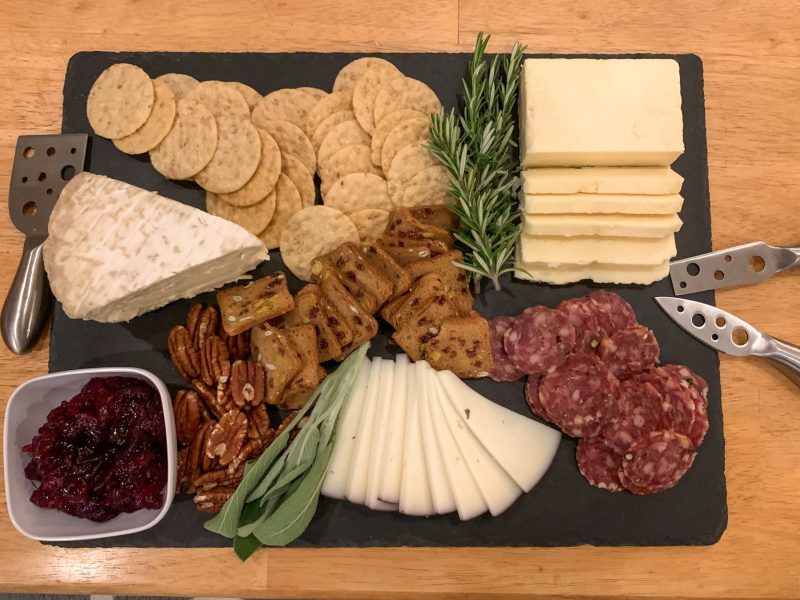I’m always behind the times so they might not even be trending anymore, but I’m so thrilled cheese plates, charcuterie plates, and “boards” have been having their moment in the spotlight. There’s nothing better than stunning platters or cutting boards overflowing with an abundance of noshes and bites. I even received a book dedicated exclusively to the topic as a housewarming gift—people know I’m really into them (although mine are never quite as photogenic).
The most important thing is a balance of textures and flavors. My cheese plates are never the same and are fully dependent on whatever mood or whims I have while shopping. While a cheese plate has no rules, I’m a believer that at minimum, cheese plates need the following:
- A soft cheese: Délice de Bourgogne is my absolute favorite but a camembert or a triple cream brie work nicely.
- A firm cheese: you can’t go wrong with Manchego, but a good, aged cheddar is also nice.
- A funky or unexpected cheese: a gorgonzola or blue is nice, but something like a semi-firm wine-aged cheese or something with pronounced herb or truffle notes is also nice. The goal of the third is to serve something a little different.
- A jelly or compote: fig spread and quince paste are classic but apricot preserves or orange marmalade are not out of place. Maybe even try a pepper jelly.
- Crackers: I really like at least two kinds of crackers, something simple and approachable that won’t compete with the flavors of the cheeses and spreads is a must, but a second cracker of whole wheat, something with seeds or nuts, or dried fruit is a nice bonus.
- Nuts or dried fruit: dealer’s choice, whatever you have on hand or whatever sounds good to you.
- Something fresh: sliced apple or sliced pear is always delightful.
- Something meaty (optional): a cheese plate is not a charcuterie plate, but you cannot go wrong adding some thinly shaved prosciutto or a coppa or artisanal salami.


